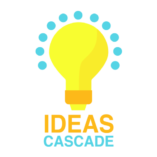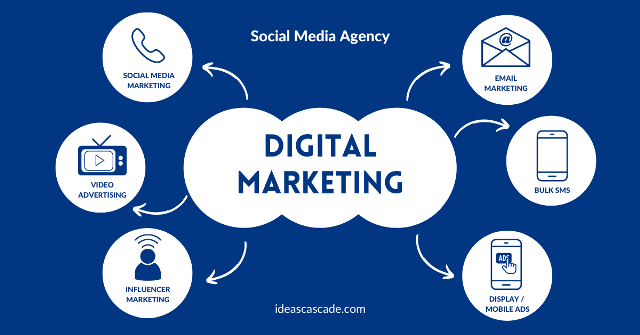The 21st century is often referred to as the informative / digital age due to the rapid transition from regular progress to digital technologies. This rapidly advancing world demands innovative marketing skills to reach clients directly and engage them with your products and services effectively.
The goal of marketing is the announcement of products and services in an effective way that ensures sales. Therefore, e-newsletters have received a buzz in digital marketing.
Concept of a newsletter
To segregate the information among your audience, sending regular updates is an effective way to achieve the desired results.
“The word newsletter refers to a letter containing targeted information / news.”
The concept originated in the early 17th century and further evolved into the more advanced form that we are familiar with today.
Email Newsletter – an approach for marketing
Sending emails having news, updates, offers, discounts and promotions is a renowned marketing approach. This method helps companies to directly deliver their product / service information to their clients.
It can be defined as:
Newsletters are used in email marketing to regularly update clients about the latest trends, sales, products, or services provided by the brand or company.
It can also be understood as: “a miniature newspaper to market the content via email.”
Purpose of Email Newsletter
Email bulletins are created with the sole objective of “creating brand awareness (including product or service briefings) in addition to exciting sales offers directly to the client’s inbox.”
However, the purpose may vary depending on the aim and targets of the businesses that they want to attain. Such as a clothing brand would create an email newsletter with the purpose of increasing company sales. Same as a blogging website would create a newsletter to inform its subscribers about a new blog published on the website to generate traffic.
Newsletters are “CREATING AWARENESS” which is mentioned above. In turn, they are helping businesses to maintain a relationship with their end users and attain loyalty with customers.
Types of e-newsletters
Depending on the marketing strategy, email bulletins can be classified into four categories.
- Selling Newsletters are written for brand sales, their offers, and their products to achieve sales targets.
- Content Newsletters intend to deliver authentic and engaging content to generate traffic on websites and maintain subscribers’ interest in their sites.
- Trigger Newsletters are set in an automotive mode which activates when a certain action is taken by the customer or any other trigger pops up. For example, making a purchase (customer-initiated action) or neglecting cart reminders (system-generated).
- Transactional Newsletters on the other hand are generated specifically when a transaction, purchase, or any action is taken by the client. It can even include signing up for an online platform.
Moreover, depending on the audience catered for, there are 3 types of e-bulletins:
- The Company Newsletters issued by brands or companies to build communication among their clients, employees, or stakeholders. It fulfills the purpose of delivering product information, the company’s spotlight, financial reports, and much more to its audience.
- The Consumer Newsletters are generated to build a strong bond with their potential customers to achieve sales targets.
- The Organization Newsletters issued by NGOs, clubs, or any similar organization to let people know about their activities and work.
According to an estimate, email users globally have reached 4.3 billion which will increase to 4.6 billion in the next couple of years. This fact depicts the importance of email marketing.
Emails are a powerful tool to deliver product descriptions, Friday sales, coupons, discount offers etc., directly to the customer’s inbox. Therefore, a company or individual must use email marketing as a potent way to disseminate information and build a strong connection with their audience.
Steps to creating an engaging e-newsletter
While it is widely understood that there is a significant impact of emails on the growth of a company. So, it is equally important to explore unique and effective ways to craft e-newsletters that can sustain loyalty and connection for the long term with the end-users.
Here, I am discussing 3 simple steps that will help to craft an effective e-bulletins:
- Planning
- Crafting
- Analyzing and evaluating
Let’s discuss each one thoroughly to know what exactly has to be done to create engaging e-newsletters.
Step 01: PLANNING
Planning is a broad term that involves every step that has to be taken in the future from creating content, choosing visuals, and finding emails to selecting domains, etc. It involves every little detail that is going to be part of emails. However, we will consider the key points.
- Finding and listing subscribers’ email addresses
The primary concern of a newly launched startup is to find customers’ email IDs. This can be done by contacting the local General Data Protection Regulation (GDPR). Moreover, adding CTAs to the website, creating social media ads, or listing emails directly from the clients can also help you grow your customer database.
- Establishing the frequency
Choosing the e-newsletter frequency or sending interval i.e., weekly, fortnightly, or monthly is an important decision because it sets the subscriber’s expectations, helps to design content, and creates consistency.
- Choosing the right time
It is also important to plan which time of the day is suitable to grab subscribers’ attention and gain maximum clicks to the newsletter. According to research, sending emails during mid-day gets significant traffic compared to other times of the day. This may be due to the fact that people usually check their inbox before returning to work after lunch break.
Step 02: CRAFTING
While drafting newsletters, it is necessary to craft them with attractive visuals and a reader-friendly format with concise information. It involves:
- Topic Selection
Wisely choose a topic for your newsletter to maintain readers’ interest and uphold a brand image. Writing on an engaging topic helps you to maintain subscribers’ interest and commitment to the newsletter.
- Captivating heading
Initiating an email bulletin with a striking heading grabs readers’ attention and engagement with the content. Many of us do open emails but due to tedious taglines, end up deleting them. Try to create concise and unique heading lines.
- Writing authentic and targeted information
The key to a long-lasting relationship with subscribers is to satisfy their thirst for information with well-researched, authentic, and updated information. It helps to build brand credibility and grow significant traffic.
- Adding visuals
Putting relevant images with eye-soothing colors adds value to the newsletter. It helps readers to understand and engage with the content.
- Devices-friendly format
The most used device at the present time is mobile phones. Therefore, it is crucial to design a newsletter mobile-friendly. It involves text formatting, color usage, image-to-text balance, etc.
It is also important to note that the ideal length of a newsletter is 200-300. So, focus on essential information.
- Call to Action (CTA)
Wrap up the content with CTA relevant to the company’s objective. For instance, CTA for blogs can be “SIGN-UP” to the website whereas, for clothing brands, CTA would be “BUY NOW” etc.
Step 03: ANALYZING & EVALUATION
This step allows us to determine the user’s engagement with the content that was sent to their emails. It helps to improve the quality of the newsletter and aids in finding active users. In this way, a long-term connection will be built with loyal customers. Evaluation of the content can be done through:
- A/B test
A/B test is used to compare the performance of different versions of single web content to examine user experience. In the A/B test, A depicts the original version of the content serving as CONTROL whereas B is the updated version of the same content. Hence, it aids in finding the version to be persuaded further.
- KPIs Analysis
Key Performance indicators (KPIs) are a matrix used to analyze the performance of a newsletter. It typically involves click rate (No. of clicks on the link added to the newsletter), Bounce rate (number of mails that could be delivered), Delivery rate (depicts the number of emails delivered compared to the sent mails), and unsubscribe rate (no. of readers who opt for the unsubscribe option).
Conclusion
Successful marketing involves a long-lasting relationship with clients in a promising way to boost business. The digital era has made things easier to do. Sending an offer or promotion or an update via emails is one of those marketing strategies that can help to build a strong community with the audience.
Facts show that crafting an engaging email newsletter results in brand-customer loyalty and increased sales with an increased social media following. Therefore, strategic planning is required to produce top-notch newsletters to ensure traffic generation and sales of the offerings.
Lastly, regular and timely publication with consistency is the key to the success of e-newsletter marketing. It maintains users’ anticipation. The purpose is not only to market the product but to foster a thriving community as well.
So, take a step ahead and build a community through emails.



